Interweaving Equity into a Sustainable South
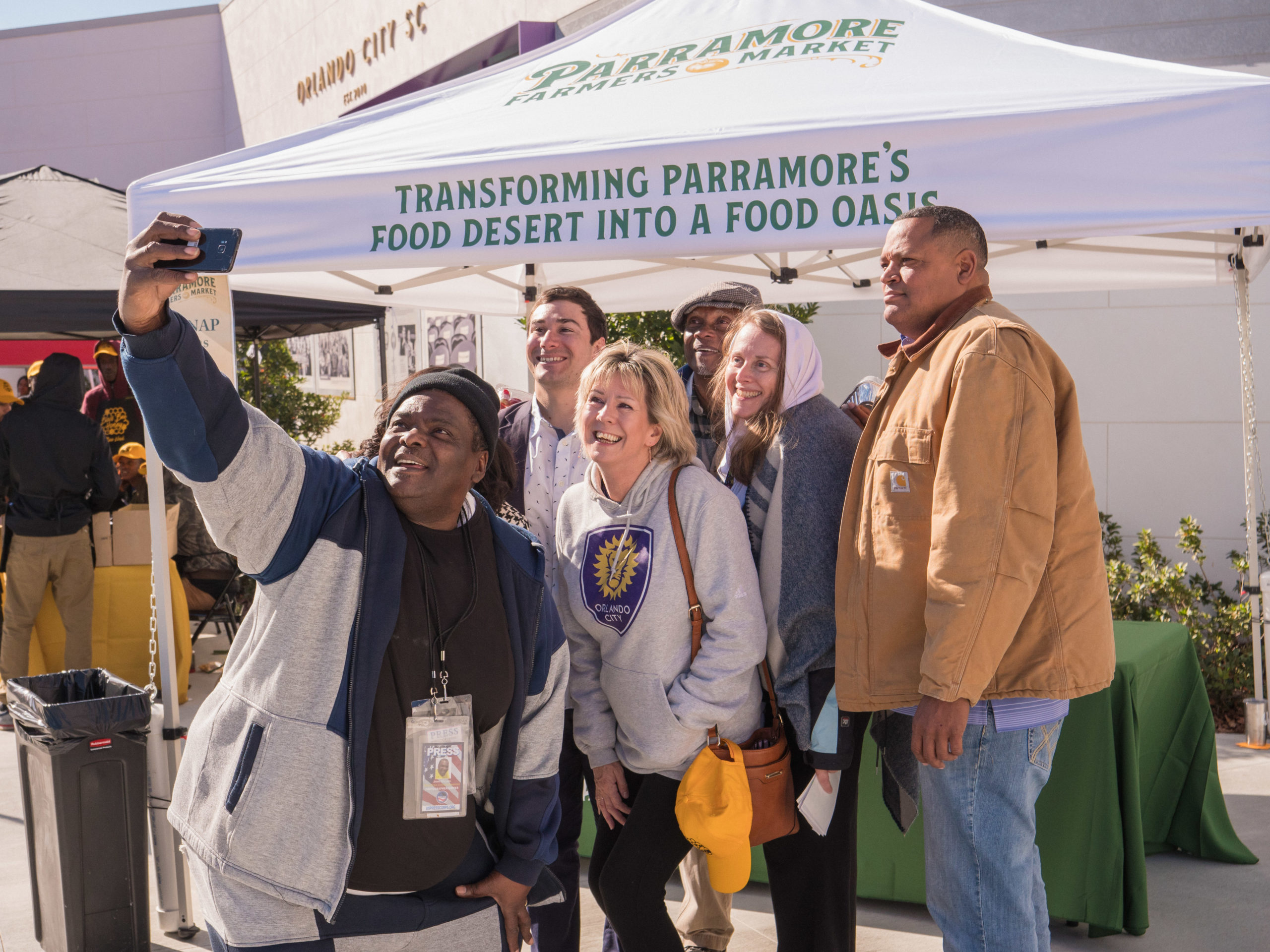
Weaving Through Every Aspect of Sustainability and Resiliency Work
On cold winter mornings in Buncombe County, North Carolina, Tracy used to wake up to a difficult choice: try to heat her Asheville home and face an impossibly high utility bill, or ignore frozen fingers and toes so she could afford to feed her two small children.
When Knoxville, Tennessee, Sustainability Director Erin Gill first heard about the need to address equity in sustainability efforts, she couldn’t help but feel a bit overwhelmed. “My two-person office is tasked with tackling the big hairy crisis of climate change,’” she recalls. “I wasn’t sure I was ready to take on the crisis of racial inequity, too.” But as Gill learned more and attended trainings like those offered through the Urban Sustainability Directors Network (USDN) Innovation Fund, she stopped feeling overwhelmed and instead felt energized: rather than a new, distinct problem for sustainability offices to “solve,” equity was a lens to weave through every aspect of sustainable resiliency work.
“Just like we’ve asked partners to integrate environmental considerations into their work, I see equity as something we need to integrate into ours,” she says. “Our office can be an ally to other organizations that are deeply involved in advancing racial equity, and we need to apply a racial equity lens to our own work and lend our voice in helping to promote equity more broadly.”
“Our office can be an ally to other organizations that are deeply involved in advancing racial equity, and we need to apply a racial equity lens to our own work and lend our voice in helping promote equity more broadly.”
— Erin Gill, City of Knoxville, Director of Sustainability
SSDN members understand that groups that have been marginalized by economic systems or racial biases are more likely to find themselves disproportionately affected by climate change, energy costs, and other environmental threats. That’s why many SSDN members are placing equity front and center in their work to create more sustainable, resilient cities.
Digging into Sustainable Data and Training
Throughout United States history, social and economic policies have consistently pushed communities of color or poverty into areas where the impacts of climate change, such as flooding or extreme temperatures, are more severe and not sustainable. But while the anecdotal evidence of climate impacts on marginalized communities is often readily apparent, it’s no substitute for data. Several SSDN member cities have focused on local data as a baseline for sustainability efforts.
Peter Nierengarten, Environmental Director, and his colleagues in Fayetteville, Arkansas, used a USDN-funded Equity Fellow from Stanford University to complete an Equity Profile and present it to city council. Researched and produced by Fellow Sean Volavong (a native of nearby Van Buren, AR), the Equity Profile is a comprehensive data analysis that documents disparities in economic, educational, health, transportation, and housing equity indicators with measurable goals to improve equitable actions for the city’s future.
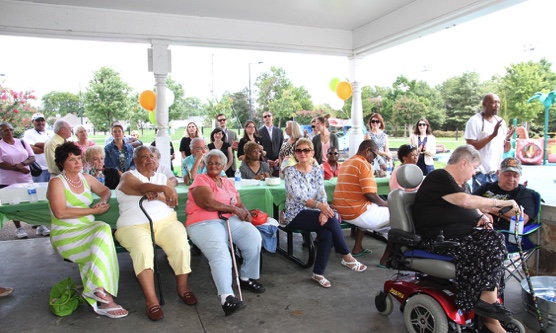
“We wanted an equity profile because we didn’t have a good baseline and needed a good starting place,” says Nierengarten. “Data is important to understand – what exists currently and what is expected to happen so you can be proactive in designing programs and policies. Our equity profile was a helpful foundation for our work going forward.”
In Sarasota County, Florida, local research showed that low-income residents in the area spend 13-19% of income on electric bills, versus 2-3% for median+ income homes.
“That inequity showed us that we were going about it wrong,” says Sara Kane, Sustainability Program Coordinator for Sarasota County UF/IFAS (Institute of Food and Agricultural Sciences) Extension & Sustainability. “We realized that the people we were reaching didn’t need the free energy upgrade materials we were distributing. They could afford to buy them, whereas low-income people couldn’t and needed more education for behavior change. We realized we needed to go into their homes.”
Several cities, including Charleston, South Carolina, Raleigh, North Carolina, and Asheville, North Carolina, are working with National Environmental Modeling and Analysis Center (NEMAC) at the University of North Carolina Asheville to assess climate threats and vulnerabilities throughout their communities, and realizing the correlation between equity and potential risks. Many cities are coupling this sustainable research with equity assessments.
“We’ve been working with NEMAC to overlay Asheville’s climate threats (such as frequent flooding, image below), and assets with the Centers for Disease Control and Prevention’s Social Vulnerability Index to pinpoint which Asheville community members are disproportionately impacted,” says Asheville’s Chief Sustainability Officer Amber Weaver. “Within the United States many African Americans experienced redlining through government programs that constrained populations to areas of land that are most impacted by climate threats such as flooding or landslides. Now Asheville is examining its present policies and how to address equity as an organization. Local governments need to change government practices, examine how and where budgets are allocated, and include equity in planning and urban design.”
Training also is a critical part of any equity effort, and almost every SSDN member that has considered equity has incorporated some sort of training for its sustainability office and often community partners.
One of the most effective trainings and collection of resource materials comes from the Government Alliance for Racial Equity (GARE), which has conducted trainings in Asheville/Buncombe County, Raleigh, Sarasota County, Knoxville, and more. Asheville has also used GARE’s Racial Equity Toolkit to incorporate sustainable equity into the development of its Climate Resilience Resource Guide.
Approaches Tailored to a Sustainable Community
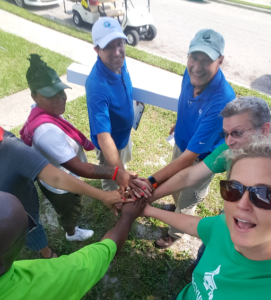
A core tenet of equity work is an understanding that one-size-fits-all approaches rarely live up to their description. The needs of every individual and community are different, which means that solutions are best when designed and tailored appropriately. This holds true for the equity approaches of SSDN members.
In some cases, simple policy or program changes can be first-steps toward improved equity. For example, when Fayetteville’s Equity Profile revealed an increasing Hispanic population, the Sustainability Office produced its first-ever bilingual mailer about recycling. They also adjusted the membership rates for a new bike share program to make it more affordable for lower-income users, based on income data from the Equity Profile.
Focusing on equity also means being intentional about understanding and working with the communities served.
“In Knoxville, we looked at who was most burdened by high utility bills and looked for barriers that kept lower-income communities from accessing energy efficiency programs and resources,” says Gill. “That included using racial and income lenses. If we design programs that meet the energy efficiency needs of these communities, we end up with better programs overall. That’s an underlying tenet of our energy efficiency work.”
In Sarasota County, a core of trained volunteers (image, left) works with residents of the county’s Housing Authority properties to conduct energy audits and upgrades, reduce electricity bills, address needed repairs, and educate them about other ways to reduce consumption.
“When we go into units and talk to residents, most of them have a limited understanding about how their electricity works and how to reduce consumption,” says Kane. “In these public housing units they are paying their own utility bills, so it can really affect their income and energy efficiency savings can give them more money for other things. For example, one resident was paying $300 a month for electricity because of a broken lever on the air conditioning system. We were able to get the housing authority to fix it and educate the tenant on efficiency measures, which can save them hundreds of dollars each month.”
“Many of these young people didn’t have safety and stability in their local environment… Now they’ve got mentors, they’ve got trainers, they’re learning stuff new every day, they’re giving back in the community and they feel good they’re contributing.”
— Larry Bratton, Energy Conservation Corps Program Director, Sustainability Institute, Charleston, SC
Equity was on the minds of Savannah’s Sustainability Director, Nick Deffley, and his partners in a city-wide effort to mitigate storm water impacts, but the tide turned more toward equity when the group’s original plan to develop urban tree nurseries on FEMA lots proved a non-starter. Instead, they decided to focus on city-owned vacant lots in communities that had been marginalized, inviting residents into the conversations about how they wished to create more resiliency and including money in the budget for resident-designed and driven projects.
“There’s been a long history here of residents, especially in more of the marginalized communities, just not feeling like anyone’s thinking about them, taking their input, and seeing tangible results from that,” says Deffley. “But the idea here is that we’re not just parachuting in and saying, ‘The city has this idea and we’re going to just come in and do it and we hope you like it.’ Instead, when we go to the neighborhood leaders, we are able to say, ‘We know you didn’t make a decision on whether or not we came and used these city properties as urban nurseries, but we also want to make sure we are doing things that the neighborhood wants to see and can take pride in.”
Sustainable Workforce Development as an Equity Cornerstone
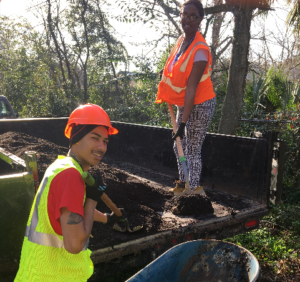
Two SSDN members have used grant awards from the Southeast Sustainable Communities Fund (SSCF) to provide individuals from previously under-supported communities with an entryway into a growing green jobs market.
In Savannah, three urban tree nurseries are designed, built and maintained by a cohort of 16 men and women, ages 18-55, who are part of a landscape apprenticeship program. The cohort are simultaneously studying to become Georgia Certified Landscape Professionals. As such, they will join the ranks of just over 400 people in the state to hold that credential, thereby increasing their value in the job market.
“I know I’m going to pass that [GCLP] test with flying colors,” says apprentice Robert Harwell. “One of my goals is to be a nursery dealer. I want to grow crops, plants, agriculture, and I want to sell it retail. They say money doesn’t grow on trees, but I disagree. It does, and I want to do it.”
In Charleston, the Sustainability Institute hosts the country’s first Americorps Energy Conservation Corps program in the country to focus on energy upgrades for low-income people. For the past several years, Sustainability Institute staff have trained dozens of men and women in the art and science of energy audits, weatherization, and retrofits. Some graduates have gone on to jobs in the industry, while others have started their own auditing and upgrading companies.
“Many of these young people didn’t have safety and stability in their local environment,” says ECC Program Director Larry Bratton. “Now they’ve got mentors, they’ve got trainers, they’re learning stuff new every day, they’re giving back in the community, and they feel good that they’re contributing.”
Trust as a Cornerstone of Equity
Building trust is a core component of any equity-focused work. Neighborhoods or populations that have long felt marginalized or oppressed are not likely to engage openly or willingly, and the burden of proof will be squarely upon the city. That can be a tough position.
“Let’s be honest, the government’s not great at this whole equity thing,” says Jeremiah LeRoy, Buncombe County’s Sustainability Officer. “I think that goes back to government’s long history of providing services for people without asking them whether they even want them. So now we’re trying to establish trust within communities that have no trust of government or utilities.”
Trust building takes time, and may require some creative outreach. For example, in determining how to engage key portions of the Asheville community, Weaver realized that the city didn’t have connections to the informal community leaders and influencers who could carry the message of resiliency into their neighborhoods and encourage other residents to embrace it.
“After a USDN peer-to-peer learning exchange, I decided to engage children and parents who utilize the City’s after-school programs at our recreation centers, and inquire about recent flooding events, how it affects their access to transportation and food,” she says. “Understanding how Asheville’s community members are affected by transit and food access will be folded into our climate resilience resource guide. I’m also hoping it will give me access to parents to learn more about their concerns and needs.”
“Government has a long history of providing services for people without asking them whether they even want them. So now we’re trying to establish trust within communities that have no trust of government of utilities.”
— Jeremiah LeRoy, Buncombe County, Sustainability Manager
In Savannah, putting money behind city promises of improvements is one strategy, but Deffley and his team also hired a consultant to work with neighborhood association leaders and help them build trust and engagement around their projects.
In Charleston, the Sustainability Institute created a direct partnership with the Eastside Community Development Corporation to gain access to resident homeowners in that historic neighborhood, and has conducted weatherization workshops at the ECDC’s headquarters.
“As we retrofit homes, we’re going to try to put together other types of sustainable interventions in each house,” says Bryan Cordell, Sustainability Institute executive director. “It’s a much more intense focus on the neighborhood where we’re doing a whole lot of community outreach, trying to empower residents to do things on their own, and bringing other resources in to support them.”
“At first the community did not trust them,” says Latonya Gamble, president of ECDC. “Gaining their trust was not an easy task because ours is a community where a lot of people promise a lot of things but we get very little out of those promises. That’s why the process took a good year [to get off the ground]. Once we had a series of meetings and we explained the process, I think [the residents] felt a little bit better because they kept coming back.”
When it comes right down to it, trust comes from listening carefully and respectfully to communities that may have never felt heard before.
“Equity is a challenge that requires a lot of conversation,” says Gill. “No one comes to the table knowing all the answers. As city staff, we have to listen to community members and build relationships with them. As that happens, solutions emerge and you can see your role in them. It’s not something to tackle lightly, and it’s not just a box to check. Equity is all about sourcing answers from your community rather than prescribing answers. It means understanding the nuances of what residents in your community need.”
Making a Plan
More and more, equity is becoming an integrated part of many city sustainability plans.
“In Raleigh, we’re working on a sustainable community climate action plan to address greenhouse gas emissions from buildings, homes, transportation and from waste,” says Megan Anderson Sustainability Director for the City of Raleigh. “We’re creating an equity framework to help inform the process. There are ‘frontline communities’ in most every city, that are most effected by climate change, and these communities also typically contribute the least to greenhouse gas emissions. We want to design sustainable strategies that benefit and mitigate impacts to vulnerable communities most effected by climate change.We will educate all teams about what disparities look like in our city, and then develop strategies.”
“We want to design strategies that benefit and mitigate impacts to vulnerable communities most effected by climate changes. We will educate about what disparities look like…and then develop strategies.”
— Megan Anderson, City of Raleigh, Sustainability Manager
Knoxville leveraged a Partners for Places grant from The Funder’s Network for Smart Growth and Livable Communities to offer GARE’s sustainable racial equity training for the Mayor and her entire cabinet and staff. Knoxville now a member of GARE, and has created an internal city equity committee to uncover barriers to equity within city operations, which includes the Office of Sustainability.
“This is an opportunity to look at our plans and ask, ‘what are we missing?’” says Asheville’s Weaver. “We’re often talking about community members we know relatively nothing about in terms of their perspectives or experiences. But these community members have the very perspectives and experiences that will inform our plans and make them more equitable, relevant and effective for everyone.”
Moving the Work Forward
Sustainable equity is more of a journey than a destination, say SSDN members. The key is to start wherever a city may be, and plan to grow learning, partnerships, and programs from there.
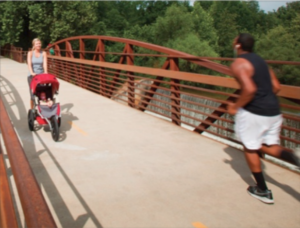
“Sustainable equity is complex work, but just start somewhere,” Anderson advises. “Use data to figure out where you can get started. Then try to leverage partnerships with existing programs and opportunities inside and outside of government. So many folks are already doing things that you can focus on, find common vision and values, and align your work to build on existing projects and create new opportunities.”
“Once you make community contacts and have made sure you’re spending time and building relationships, you should work with these groups for other aspects of sustainability,” says Kane. “Energy is the low-hanging fruit because it’s easy to see the financial inequity there. But as you’re doing the energy efficiency work, you also can also educate communities about other sustainability aspects and explore their social, environmental, and economic needs.”
“It’s important for folks in the sustainability arena to think about where equity fits into this conversation to recognize that impactful changes require deep thought about the process,” says Weaver. “Including equity takes a lot of contemplation and continued training for everyone you’re working with.”
Most importantly, city sustainability leaders should recognize that equity is an integral part of overall sustainability and resilience, and therefore should be part and parcel of any sustainability effort.
“There’s still plenty of room for continued work, growth, improvement,” says Fayetteville’s Nierengarten. “Equity is not the easiest nut to crack. You need to be persistent.”
The Southeast Sustainability Directors Network (SSDN) is a network of over 60 local government sustainability officials in the Southeastern United States dedicated to advancing sustainable and equitable best practices throughout the region.
For more information please visit www.southeastsdn.org.
Contact: Meg Jamison, meg@southeastsdn.org
All images are used with permission from the City of Sarasota, City of Knoxville, City of Savannah, City of Fayetteville, and City of Asheville.